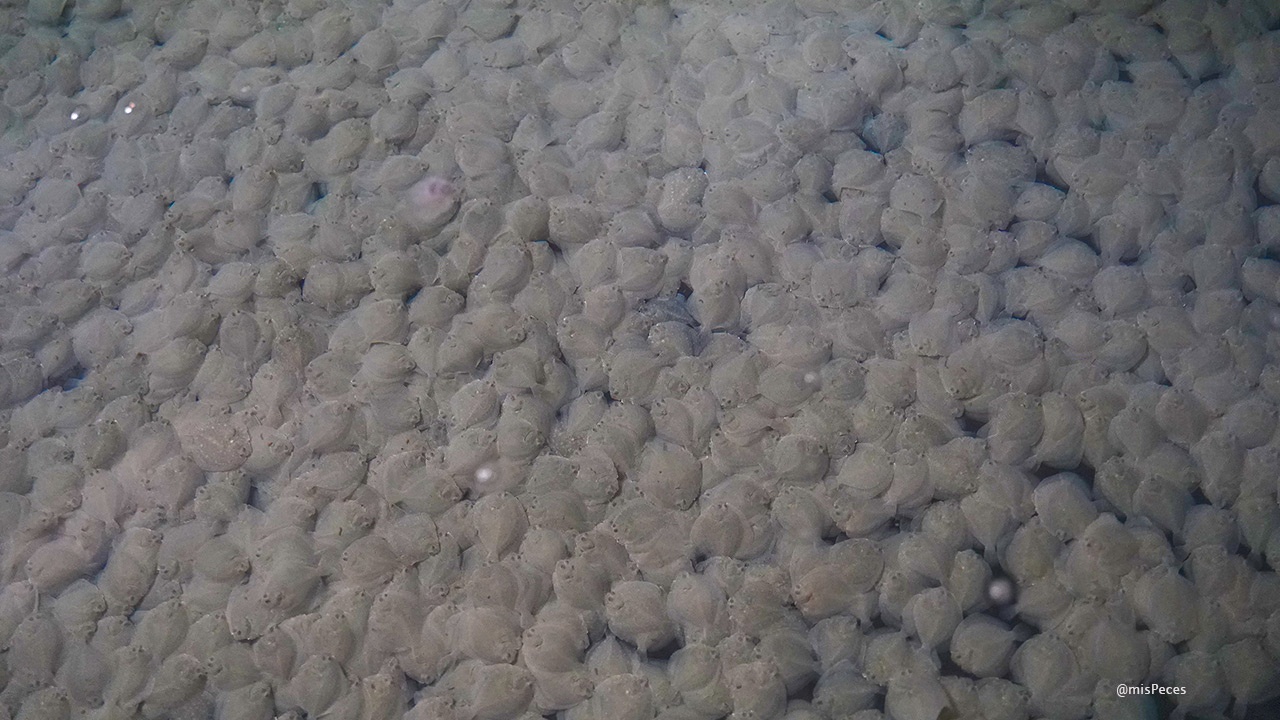 Juveniles de rodaballo
Juveniles de rodaballo
The production of juveniles of Spain’s main marine aquaculture species is expected to show stability and slight recovery in 2025, according to trends observed over recent production cycles and data from the 2025 Aquaculture in Spain Report published by APROMAR. The figures confirm that decision taken at the hatchery stage – crucial for anticipating performance during the grow-out phase – will shape the sector’s production trajectory over the coming year.
In the case of European seabass, the species that recorded the strongest growth in 2024, the supply of juveniles remains solid, albeit with nuances. A total of 54.5 million fry were produced in 2024, a high figure that has supported the increase in grow-out volumes. However, hatcheries forecast a significant reduction to 40 million units in 2025, indicating that the species is entering an adjustment phase after several years of marked dynamism. Even so, hatcheries continue to operate close to optimal capacity, ensuring that seabass will remain the main driver of Spanish marine aquaculture.
For gilthead seabream, the outlook shifts compared with recent years. After several cycles of contraction driven by competitive pressure and low Mediterranean prices, Spanish hatcheries – which produced 20.7 millino fry in 2024 – anticipate a moderate recovery, with a forecast of 23.4 million juveniles in 2025. This increase in juvenile availability will be a key factor in the expected rebound in final production, following the sharp decline recorded last year.
The situation is different for meagre, a species undergoing a structural shutdown. Juvenile production in 2024 totalled 4.5 million units, already a limited volume that largely explains the 31.6% fall in final output. No significant increases are expected in 2025: hatcheries are maintaining low activity levels, and recovery will not be immediate, extending the species’ weak performance for at least another production cycle.
Senegalese sole, by contrast, continues to consolidate its position as one of the species with the greatest growth potential. Galicia produced 16.5 million juveniles in 2024, and a notable increase is expected in 2025, with forecast rising to 31.9 million units. The report does not provide data for fry production in Andalusia, despite the region hosting an important hatchery centre.
| Species | Fry / juveniles 2024 (M units) | 2025 Forecast (M units) | Comment |
|---|---|---|---|
| European seabass (Dicentrarchus labrax) | 54.5 | 40.0 | Adjustment downwards after several years of strong growth |
| Gilthead seabream (Sparus aurata) | 20.7 | 23.4 | Moderate recovery after adjustment cycles |
| Meagre (Argyrosomus regius) | 4.5 | n/a | No significant changes expected; contraction phase |
| Senegalese sole (Solea senegalensis) | 16.5 | 31.9 | Strong expansion expected; key diversification species |
| Greater amberjack / Seriola (Seriola dumerili) | 0.64 | 1.2 | Emerging species; fry production doubles |
| Turbot (Scophthalmus maximus) | 15.3 | ≈15.3 | Stable juvenile output, no major variations expected |


